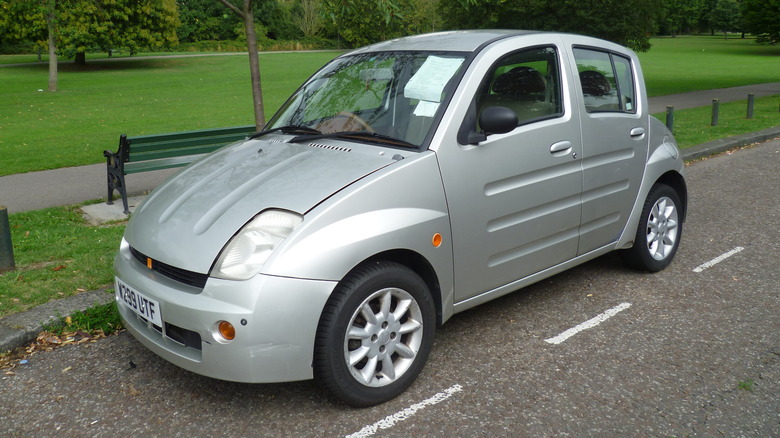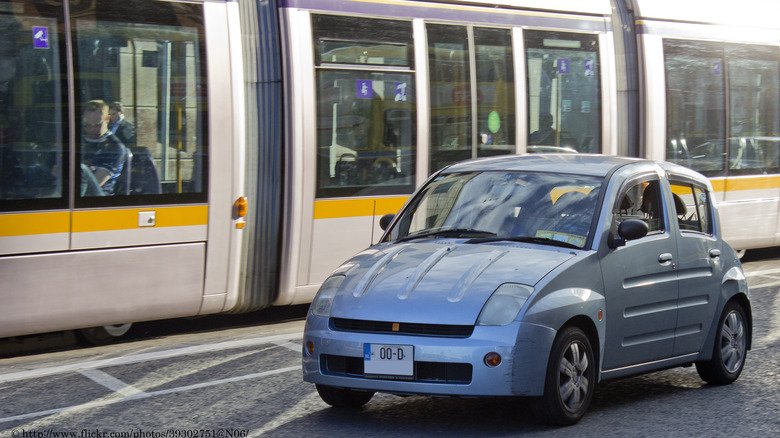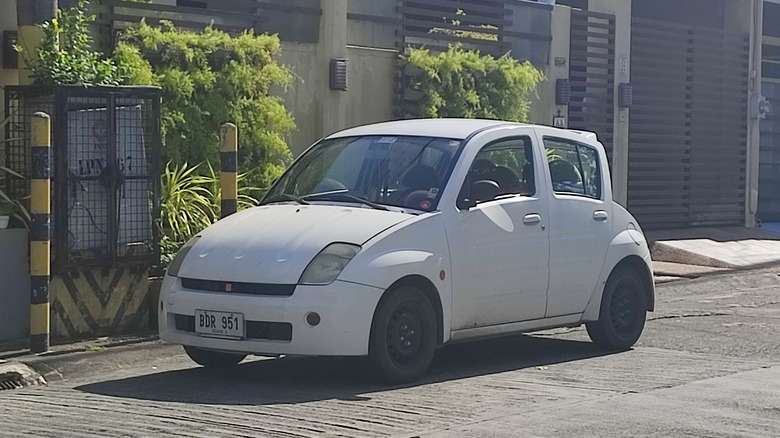WiLL Vi: One Of The Strangest Toyota's To Ever Make It To Market
Designing a commercially viable car is not always an exact science. While the simplest option is just to continue iterating on what already works, sometimes manufacturers decide to throw a wild, potentially dangerous Hail Mary and try something completely unique. Nine times out of ten, these whirlwind shots don't land, but even if they don't become the new wave of automotive transport, they at least manage to secure spots in the automotive hall of oddities.
One such example of this practice was exhibited by Japanese automotive giant Toyota in 1999. In an effort to market its wares to younger, hipper customers, Toyota teamed up with a variety of major Japanese companies to establish a new subsidiary. This company, called WiLL, would offer products that encouraged individuality and convenience. Various WiLL products were offered during the subsidiary's lifetime, including household appliances, electronics, and labor-saving devices, but the highlight of the company's five-year run was its cars, the very first of which was the mysterious WiLL Vi.
A car for the younger generation
The most striking aspect of the WiLL Vi is its silhouette, which somewhat resembles a large metal turtle. The swooping front, ridged sides, and overhanging rear window were apparently designed to invoke the image of a horse-drawn carriage, albeit with a much sturdier, more inviting frame, thanks in part to its stabilized 15-inch wheels and blistered arches. The Vi was meant to look like a car that would keep you safe and steady. The cabin, meanwhile, was designed to be soft and comfortable, with bench seats reminiscent of your favorite household couch and a simple, centralized control panel to avoid overstimulation.
Building off the bones of the Toyota Vitz, the WiLL Vi employed an 88PS 2NZ-FE 1.3-liter 16v engine and a four-speed automatic gearbox. These two factors combined gave the vehicle an excellent fuel economy rating for the time. This tied into the car's overall goal of sustainability, made in an effort to appeal to the younger crowd.
Environmental appeals
In addition to the good fuel economy, WiLL employed a handful of tricks to improve the overall sustainability of the Vi, both for its own sake and because younger drivers appreciated sustainability in their vehicles, making it a good marketing stunt. The bumpers and interior components were made of Toyota's proprietary Super Olefin Polymer, which was designed to be easily recycled, and the internal sound-deadening materials came from various end-of-life vehicles that would have been scrapped otherwise. The manufacturing process also removed the presence of lead components in vital functions like the radiator, heater core, and wiring loom.
On a related note, several of the design sensibilities developed with the WiLL Vi would find new homes after the car's eventual retirement. The emphasis on environmental sustainability, specifically, would be carried on by the Toyota Prius, the world's very first mass-produced hybrid vehicle. Coincidentally, the distinctive center-based console design present in the WiLL Vi would also carry over into the Prius line, at least for its first few models.
Petering out
While there wasn't anything overtly horrible about the WiLL Vi, for some reason, it simply never took off. Maybe it was the youth-oriented marketing. Maybe it was the unusual profile; whatever the precise cause, only around 16,000 units were sold during the WiLL Vi's sub-two-year Japan-only run from 2000 to 2001, with the vehicle being succeeded by the WiLL VS and Cypha. Considering WiLL as a whole folded just four years later in 2005, perhaps it had less to do with the car and more with the subsidiary itself.
Like many unusual one-off cars from the annals of automotive history, the WiLL Vi still has fans. Pre-owned models will occasionally sell at auction for around $3,000 to $4,000, though some have listed for as high as $7,000 to $9,000. Car fans have even spotted a WiLL Vi on the road occasionally, which means that the marketing must have worked on at least one person somewhere.



